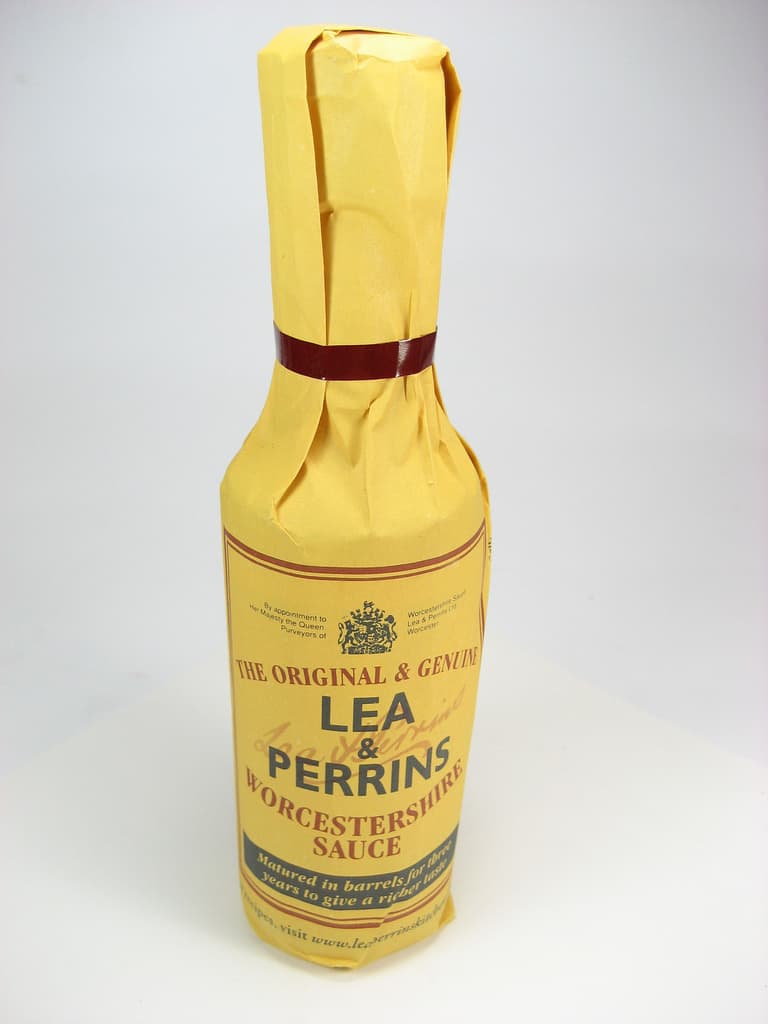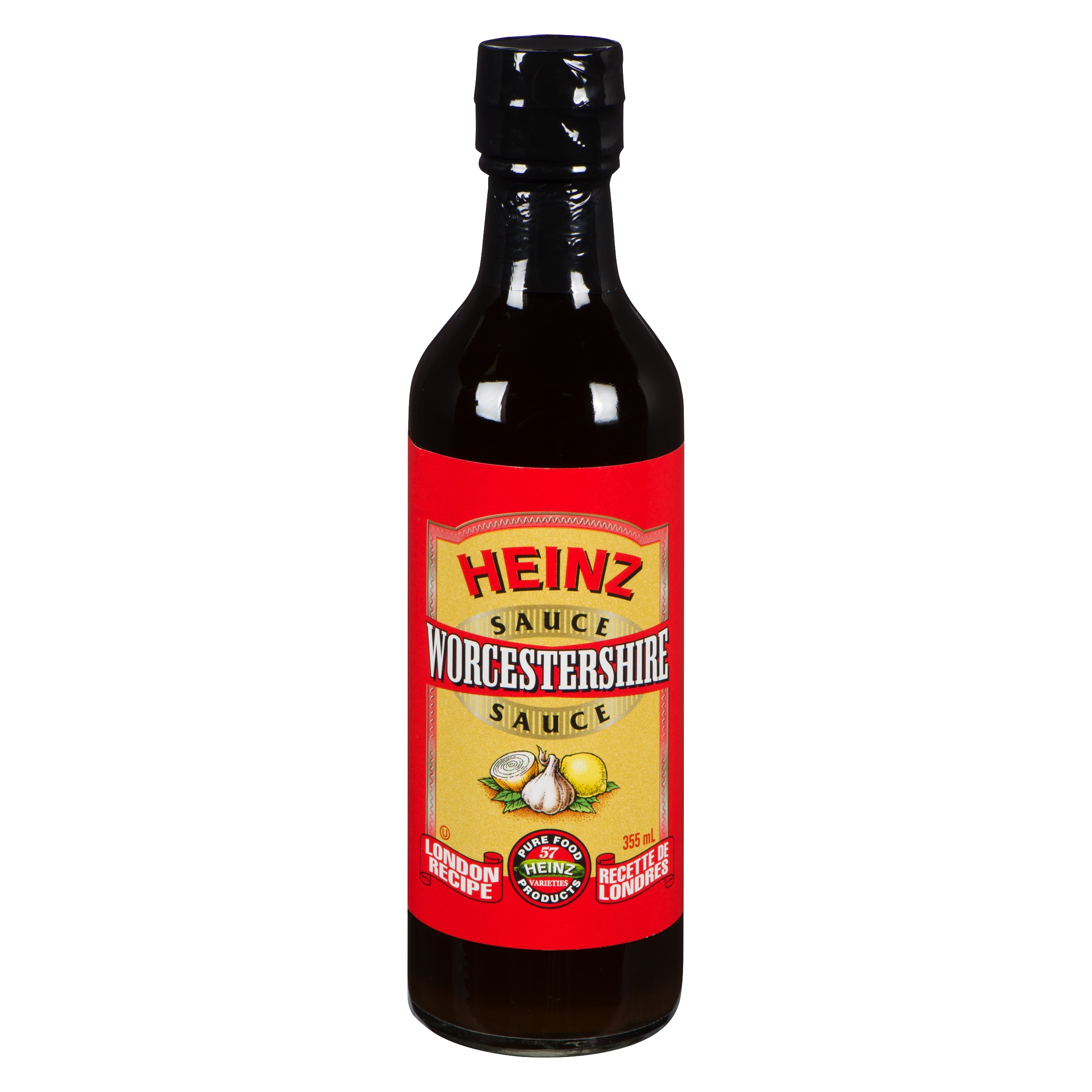Worcestershire sauce pronunciation can be tricky for many people, but it doesn't have to be confusing. This sauce, which has become an essential condiment in kitchens worldwide, carries a name that often leaves people wondering how to say it correctly. Understanding the proper pronunciation not only enhances your culinary knowledge but also boosts your confidence when discussing this popular ingredient.
Worcestershire sauce is more than just a flavorful addition to meals; it's a symbol of culinary history and tradition. Its unique taste comes from a blend of fermented ingredients, creating a tangy and savory flavor profile that complements a variety of dishes. Learning how to pronounce its name correctly is the first step toward appreciating its rich heritage.
Whether you're a home cook, a professional chef, or simply someone who enjoys food, mastering the pronunciation of Worcestershire sauce is a valuable skill. This article will guide you through everything you need to know about this topic, from its origins to the correct way to say its name. Let's dive in!
Read also:Laguardia Airport Photos A Visual Journey Through One Of New Yorks Busiest Airports
Table of Contents
- The History of Worcestershire Sauce
- Worcestershire Sauce Pronunciation
- Common Pronunciation Mistakes
- Phonetic Breakdown
- The Origins of Worcestershire Sauce
- Key Ingredients in Worcestershire Sauce
- Popular Worcestershire Sauce Brands
- How to Use Worcestershire Sauce in Cooking
- Health Benefits of Worcestershire Sauce
- Fun Facts About Worcestershire Sauce
The History of Worcestershire Sauce
Worcestershire sauce has a fascinating history that dates back to the early 19th century. It was first developed in the town of Worcester, England, by two chemists named John Lea and William Perrins. The sauce was initially created as an experiment, but it quickly gained popularity due to its unique flavor profile. Today, it is used in kitchens all over the world, enhancing dishes ranging from steak to Bloody Mary cocktails.
One of the reasons Worcestershire sauce became so popular was its innovative use of fermented ingredients. The sauce's recipe includes a mix of anchovies, molasses, vinegar, garlic, onions, and various spices, which are allowed to age for several months. This aging process gives Worcestershire sauce its rich, complex taste, making it a staple in both professional and home kitchens.
Early Development of Worcestershire Sauce
John Lea and William Perrins initially struggled to find the right balance of ingredients for their sauce. However, after several attempts, they perfected the recipe, which became an instant hit. Their creation was so successful that they eventually established Lea & Perrins, a company that continues to produce Worcestershire sauce to this day. The sauce's popularity grew rapidly, especially after British colonial officers brought it back to India, where it became a favorite among expatriates.
Worcestershire Sauce Pronunciation
Now, let's focus on the correct way to pronounce Worcestershire sauce. The word "Worcestershire" is often mispronounced because it contains several syllables that might not be immediately obvious. To pronounce it correctly, break the word into its syllables and emphasize the right sounds.
The correct pronunciation is "WUUS-ter-shuh" (rhymes with "mustard"). It's important to note that the "ce" in "Worcestershire" is silent, and the emphasis should be on the first syllable. By mastering this pronunciation, you'll be able to confidently discuss Worcestershire sauce in any culinary context.
Read also:Theron Thomas Genius Unveiling The Mind Behind The Legend
Breaking Down the Syllables
- WUUS
- -ter-
- -shuh
Remember, the key is to pronounce each syllable clearly and avoid overemphasizing the silent letters. With practice, you'll be able to say "Worcestershire" with ease.
Common Pronunciation Mistakes
Many people make mistakes when trying to pronounce Worcestershire sauce. Some of the most common errors include:
- Adding the "ce" sound: Some individuals pronounce the "ce" in Worcestershire, which leads to an incorrect pronunciation.
- Overemphasizing the "shire": Another common mistake is placing too much emphasis on the "shire" part of the word, which disrupts the natural flow of the pronunciation.
- Incorrect syllable stress: Stressing the wrong syllable can make the pronunciation sound awkward and unnatural.
Avoiding these mistakes will help you achieve the correct pronunciation. Remember, practice makes perfect!
How to Avoid Pronunciation Errors
To avoid common pronunciation mistakes, listen to native speakers or audio recordings of the correct pronunciation. Repeating the word aloud and breaking it into syllables can also help reinforce the proper sounds. Additionally, practicing in front of a mirror can improve your pronunciation by allowing you to observe your mouth movements.
Phonetic Breakdown
A phonetic breakdown of Worcestershire sauce pronunciation can provide further clarity. Here's a detailed look at the sounds involved:
- WUUS: The "W" sound followed by a short "oo" sound.
- -ter-: A soft "t" sound followed by a short "er" sound.
- -shuh: A "sh" sound followed by a soft "uh" sound.
By focusing on each sound individually, you can improve your overall pronunciation. Phonetic guides are a valuable resource for mastering tricky words like Worcestershire.
Using Phonetic Guides
Phonetic guides are available online and in dictionaries, providing detailed information about the sounds of words. These guides can help you understand the nuances of pronunciation and improve your ability to say complex words correctly. For example, the International Phonetic Alphabet (IPA) can be a useful tool for learning the correct pronunciation of Worcestershire sauce.
The Origins of Worcestershire Sauce
The origins of Worcestershire sauce are rooted in British culinary history. Developed in the early 1800s by John Lea and William Perrins, the sauce was initially created as an experiment. Its unique blend of fermented ingredients set it apart from other condiments of the time. The sauce's popularity grew rapidly, especially after it was introduced to British colonial officers in India, who appreciated its robust flavor.
Today, Worcestershire sauce is produced by several manufacturers, but Lea & Perrins remains the most well-known brand. The company's commitment to quality and tradition has ensured the sauce's continued popularity. Understanding the origins of Worcestershire sauce adds depth to your appreciation of its culinary significance.
Traditional Recipe
The traditional recipe for Worcestershire sauce includes a variety of ingredients, such as anchovies, molasses, vinegar, garlic, onions, and spices. These ingredients are carefully blended and allowed to age for several months, resulting in a rich, complex flavor profile. The aging process is crucial to developing the sauce's distinctive taste, which is both tangy and savory.
Key Ingredients in Worcestershire Sauce
The key ingredients in Worcestershire sauce contribute to its unique flavor. Anchovies provide a savory umami taste, while molasses adds sweetness. Vinegar gives the sauce its tangy edge, and garlic and onions enhance its depth. Spices like cloves, nutmeg, and tamarind round out the flavor profile, creating a harmonious blend that complements a wide range of dishes.
Some variations of Worcestershire sauce may include additional ingredients, such as chili peppers or soy sauce, to create different flavor profiles. However, the core ingredients remain consistent across most brands, ensuring the sauce's signature taste.
Health Considerations
While Worcestershire sauce is delicious, it's important to consider its nutritional content. The sauce is relatively low in calories but can be high in sodium, so it should be used in moderation. For those following a low-sodium diet, there are reduced-sodium versions of Worcestershire sauce available on the market.
Popular Worcestershire Sauce Brands
Several brands produce Worcestershire sauce, each with its own unique twist on the classic recipe. Lea & Perrins, the original creator of Worcestershire sauce, remains the most popular brand worldwide. Other well-known brands include Heinz, Annie's Naturals, and Frank's RedHot. These brands offer a range of options to suit different tastes and dietary preferences.
When choosing a Worcestershire sauce, consider factors such as flavor intensity, ingredient quality, and dietary restrictions. Sampling different brands can help you find the one that best suits your culinary needs.
Comparing Brands
Comparing Worcestershire sauce brands can be an enjoyable experience. Look for differences in flavor profiles, ingredient lists, and price points. Some brands focus on traditional recipes, while others offer innovative variations. Experimenting with different brands can enhance your cooking and broaden your culinary horizons.
How to Use Worcestershire Sauce in Cooking
Worcestershire sauce is a versatile condiment that can be used in a variety of dishes. It adds depth to marinades, sauces, soups, and stews. The sauce's tangy, savory flavor complements meats, vegetables, and even desserts. Here are some ideas for incorporating Worcestershire sauce into your cooking:
- Marinades: Mix Worcestershire sauce with olive oil, garlic, and herbs to create a flavorful marinade for steak, chicken, or pork.
- Sauces: Add Worcestershire sauce to gravies, barbecue sauces, and salad dressings for an extra boost of flavor.
- Soups and Stews: Stir a splash of Worcestershire sauce into soups and stews for added depth and complexity.
- Cocktails: Use Worcestershire sauce to enhance the flavor of Bloody Marys or Caesar cocktails.
Experimenting with Worcestershire sauce in your cooking can lead to exciting new flavor combinations and culinary discoveries.
Culinary Tips
When using Worcestershire sauce in cooking, start with small amounts and adjust to taste. The sauce's strong flavor can easily overpower a dish if used in excess. Gradually incorporating Worcestershire sauce into recipes allows you to control its impact on the overall flavor profile.
Health Benefits of Worcestershire Sauce
Worcestershire sauce offers several potential health benefits. Its fermented ingredients may support gut health, while the presence of vitamins and minerals can contribute to overall well-being. However, it's important to consume Worcestershire sauce in moderation due to its high sodium content.
For those looking to incorporate Worcestershire sauce into a healthy diet, choosing reduced-sodium versions can help minimize sodium intake. Additionally, using the sauce as a flavor enhancer rather than a main ingredient can help maintain a balanced diet.
Nutritional Information
According to the USDA, a tablespoon of Worcestershire sauce contains approximately:
- Calories: 10
- Sodium: 160 mg
- Carbohydrates: 1 g
- Protein: 0 g
Understanding the nutritional content of Worcestershire sauce can help you make informed dietary choices.
Fun Facts About Worcestershire Sauce
Here are some fun facts about Worcestershire sauce:
- Worcestershire sauce was originally developed as a failed attempt to create a pickling solution.
- The sauce's recipe was nearly discarded until a customer returned to Lea & Perrins, requesting more of the sauce after trying it.
- Worcestershire sauce is a key ingredient in the classic Bloody Mary cocktail.
- The sauce is aged for up to 18 months to develop its complex flavor.
These fun facts highlight the rich history and versatility of Worcestershire sauce, making it a fascinating subject for food enthusiasts.
Cultural Significance
Worcestershire sauce has become an integral part of global cuisine, transcending its British origins to become a staple in kitchens worldwide. Its cultural significance lies in its ability to enhance the flavor of diverse dishes, from traditional British recipes to international cuisines. Celebrating the cultural impact of Worcestershire sauce highlights its enduring legacy in the culinary world.
Kesimpulan
Mastering Worce

